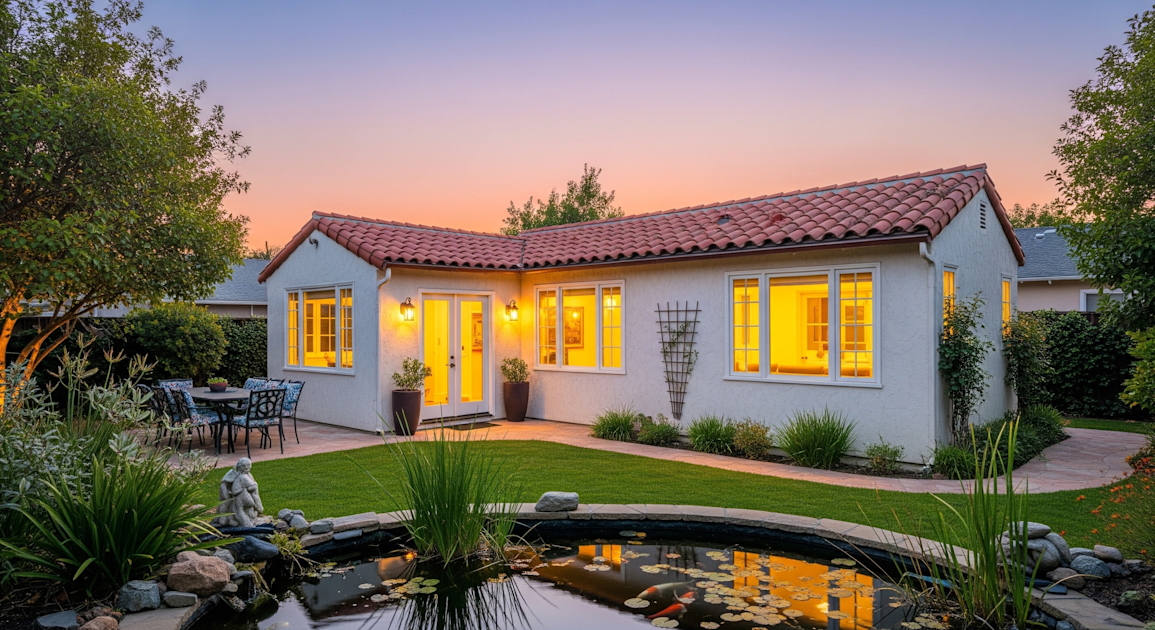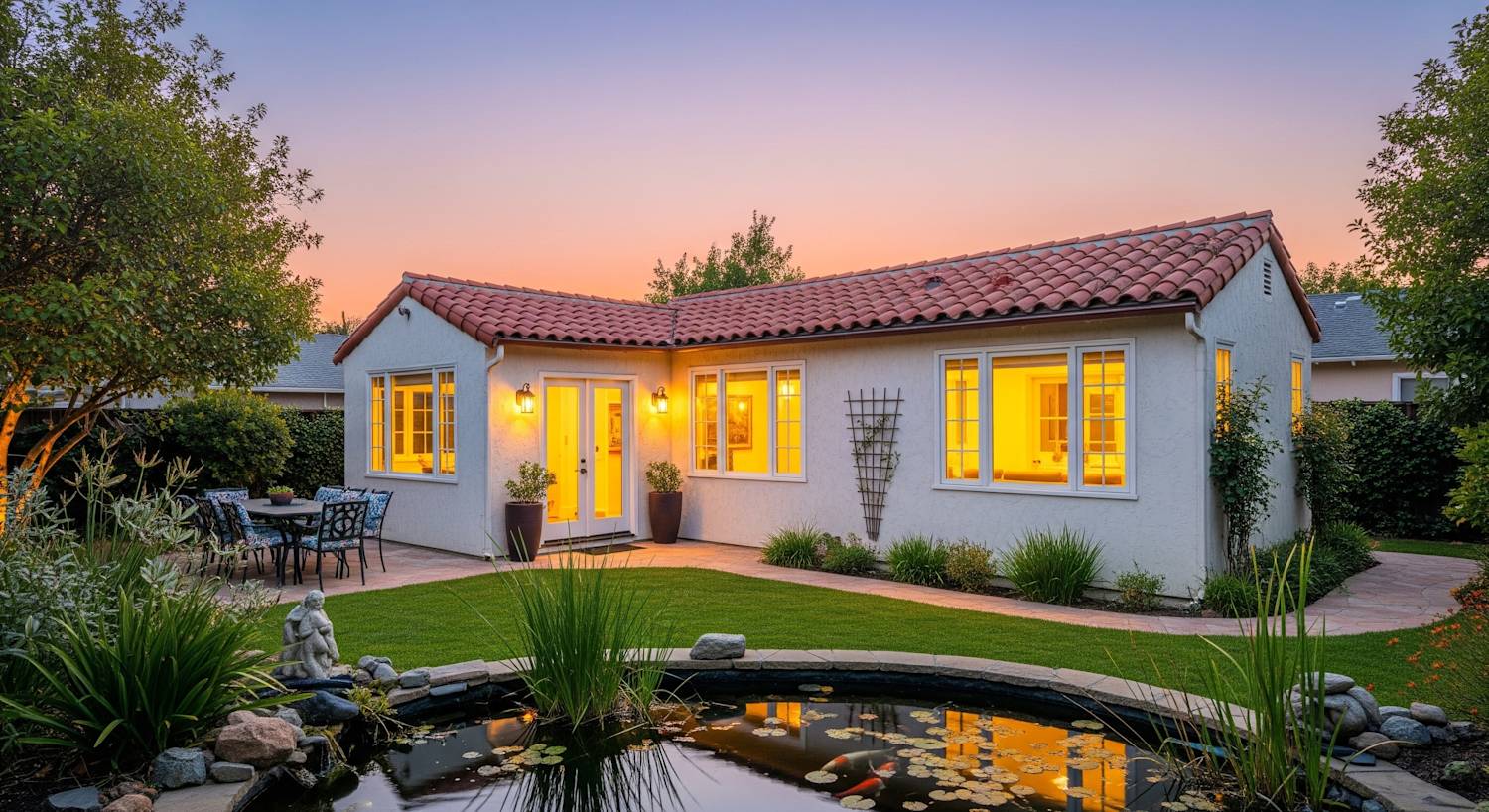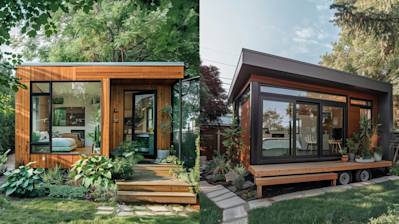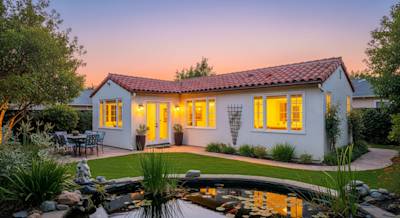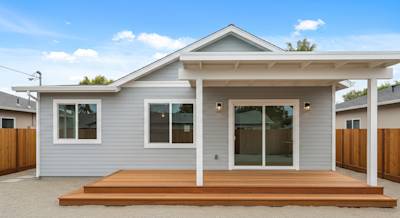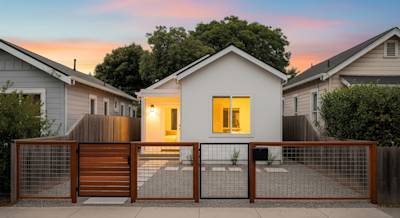Spanish style ADU (Accessory Dwelling Units) have been gaining popularity across the country and for all valid reasons. The uniqueness and charm of a Spanish-style exterior, paired with the comfort and convenience of modern interiors, have become the perfect recipe of an ideal home. This article will delve deeper into Spanish Style ADUs and why they are the newest rave in the housing landscape.
What Exactly is a Spanish Style ADU?
To explain what a Spanish style ADU is, allow us to first define an ADU. An Accessory Dwelling Unit (ADU) is a secondary living space that shares the same property as a primary household. It might be an addition to an existing house, a converted garage, or a standalone structure in the backyard.
When you blend in the Spanish architectural style with an ADU, you get a Spanish Style ADU. These units exhibit classic Spanish architectural features such as clay tile roofs, stucco siding, curved arches, tiled patios, and ironwork.

The History of Spanish Style Architecture
Understanding the history of Spanish style architecture gives us insight on why Spanish Style ADU’s are so abundantly popular. This architectural style is traceable to colonial Spain. In the late 18th and early 19th centuries, these styles were adopted across Southern U.S, particularly in California. The Spanish exterior was favored due to its s charm and native materials' practicality in the Californian climate.
Characteristics of a Spanish Style ADU: A Blend of Tradition and Modernity
Spanish style ADUs strike a perfect balance between traditional design elements and contemporary functionalities, which make them both aesthetically pleasing and functionally efficient. Some common features of Spanish Style ADUs are as follows:
-
Thick, Stucco Walls: This keeps the interiors cool during summer and warm during winter, perfect for the regions that enjoy a warm climate throughout the year.
-
Low-Pitched, Red, Terracotta Tiles: The roofs are historically constructed with red clay tiles that add a definitive Mediterranean charm.
-
Interior Courtyards: Open-hearted living with indoor courtyards bring the residents closer to nature.
Why Should You Consider a Spanish Style ADU?
Spanish Style ADUs not only add a distinctive aesthetic appeal to your property but also offer a handful of compelling benefits:
-
Additional Space: Spanish Style ADU’s provide additional living or storage space in a unique, charming manner.
-
Aging in Place and Multigenerational Living: These units are perfect for seniors who wish to remain close to their families and yet retain their independence.
-
Rental Income Opportunities: They can also serve as a means of additional income if rented out.
Frequently Asked Questions about Spanish Style Adu
How Does a Spanish Style ADU Differ From a Regular ADU?
While a regular ADU can take on many architectural styles, a Spanish Style ADU is distinctive with its Spanish-influenced architectural elements. This includes things like the use of stucco walls, red-tile roofs, decorative ironwork, and tilework. These elements all contribute to creating a warm, Mediterranean feel that sets Spanish Style ADUs apart from other types of ADUs, which might instead follow modern, minimalist, or other architectural styles.
Can a Spanish Style ADU Be Attached or Detached from the Main House?
Yes, a Spanish Style ADU can either be attached or detached from the main house. An attached ADU could be a converted part of the existing home, such as a basement, attic, or garage, or an addition to the home. A detached Spanish Style ADU, on the other hand, would be a standalone structure on the same property as the main house. The choice between an attached or detached ADU will depend on factors such as available space, zoning regulations, budget, and personal preference.
What are the Building Regulations for Spanish Style ADU?
Building regulations for Spanish Style ADUs can vary depending on local zoning laws. You will need to check with your local planning or building department to get specific information. However, typical considerations can include size limitations, setback requirements, parking requirements, and restrictions on who can live in the ADU. It’s also important to ensure that your Spanish Style ADU design adheres to any specific historical or architectural review guidelines if relevant.
How to Create a Modern Spanish Style ADU?
A modern Spanish Style ADU can be achieved by combining traditional Spanish architectural elements with contemporary design features. This could include integrating the use of clean lines, open floor plans, and modern materials with Spanish Style characteristics like rustic wood detailing, arched doorways, and handmade tiles. The use of outdoor living space, abundant natural light, and landscaping with Mediterranean plants can also create a modern and inviting Spanish Style ADU.
What are the Common Interior Design Features of a Spanish Style ADU?
Spanish Style ADUs often feature warm, earthy color palettes, dark wood furnishings, wrought iron details, and rustic accents. Terracotta tiles, exposed wooden beams, and decorative tilework are also common in Spanish Style ADU interiors. In terms of layout, open floor plans incorporating indoor-outdoor living spaces are often favored. This creates a natural flow and exudes a casual, relaxed atmosphere characteristic of Spanish Style homes.
Are Spanish Style ADUs Energy Efficient?
Yes, Spanish Style ADUs can certainly be energy efficient. This can be achieved through the use of energy-efficient appliances and systems, proper insulation, and good quality windows. Furthermore, the design of the ADU, such as incorporating large windows for natural light and ventilation, can contribute to its overall energy efficiency. However, the specific energy efficiency will depend on the particular materials and design choices used in the construction.
Pros of Spanish Style ADU
Unique design aesthetics
Spanish Style ADU (Accessory Dwelling Units) showcase unique design aesthetics that separates them from conventional Accessory Dwelling Units. The warm colors, terracotta roofs, artistic tiles, arches and columns, and the stucco walls reflect the rich Spanish architectural heritage. This authentic look of a Spanish Style ADU allows it to blend naturally with the main residence, neighborhood, and local environment while adding to the visual appeal of your property.
Use of Natural materials
These ADUs are typically constructed with natural materials like terracotta, clay, and stucco. These materials are not only environmentally friendly but also promote durability and longevity. The natural insulation offered by these materials can also lead to energy savings in the long run.
Flexibility in design
Spanish style ADUs boast an open floor plan and high ceilings, contributing to a more spacious and airy feel. You can also customize inside-out with ornate fixtures, arched doorways, wooden beams, and beautiful Spanish tiles. This flexibility allows you to add personal touches to the design, enhancing the character and appeal of the dwelling.
Preservation of cultural heritage
Housing structures that reflect heritage designs enable the preservation of cultural architecture. Building a Spanish style ADU can be seen as making a cultural statement and preserving a portion of traditional architecture.
Cons of Spanish Style ADU
High initial construction costs
Although Spanish Style ADUs offer undeniable appeal and durability, these come with a cost. The construction materials, ornate fixtures, and specialty items - like the unique tiles or wooden doors - can be more expensive than standard ones. Furthermore, if you want to maintain authenticity and high-level craftsmanship, hiring specialized labor could inflate costs.
Trouble finding materials
The very materials that make Spanish style ADUs unique might be difficult to source in certain regions. If you’re living far from places where these materials are naturally and readily available, you may have to bear the high costs of importing them.
Maintenance and Repair
While terracotta roofs are notoriously durable, they require professional maintenance to retain their appearance and functionality. Similarly, stucco walls might require regular checkups to avoid deterioration and to maintain their unique aesthetic. These maintenance and repair procedures could add to the total cost of having a Spanish Style ADU.
Zoning and Building Restrictions
There might be zoning and building laws that prohibit certain styles of housing or require certain standards. Whether it's restrictions on height or strict community guidelines insisting on a homogenized neighborhood aesthetic, these issues may limit your ability to build a Spanish style ADU or demand modifications to the traditional design.
Taught of architectural coherence
Unless they're carefully designed, the distinct features of Spanish style ADUs may make them stand out too much and disrupt the visual harmony of the neighborhood, especially if surrounding structures don't share similar architectural styles.
Summary
With their distinct architectural features and undeniable charm, Spanish Style ADUs have a lot to offer. They bring in elements of old-world charm, warm color palettes, intricate tile work, and sturdy, earthy materials that evoke a sense of warmth and comfort that many homeowners love. Not to mention, these ADUs are also a great way to maximize space and increase property value, making them a worthwhile investment.
No matter where you live, a Spanish Style ADU can make your home feel like a mini vacation getaway. The rustic yet elegant design style, coupled with the practicality of having an additional living space, makes it an excellent choice for homeowners. Plus, with the rise of remote work and multigenerational living, these types of ADUs can provide functional, versatile solutions to changing lifestyle needs.
So if you're considering an accessory dwelling unit, a Spanish Style ADU could be the perfect choice. You'll get the character and beauty of Spanish architecture plus all the benefits of an ADU. They are cost-effective, practical, and ultimately add value to your living space. Therefore, Spanish Style ADUs are not just a trend, they are a stylish and smart home improvement solution.
About GVD Builders
GVD Builders is a renowned construction and home improvement company based in the heart of Sacramento, CA. We have an unwavering commitment to creating remarkable and personalized living spaces. Our seasoned team of designers, builders, and craftsmen brings a blend of extensive experience, passion, and dedication to each project. GVD takes pride in our reputation for top-notch quality, attention to detail, transparency, and unparalleled professionalism. We handle everything from kitchen remodeling, home additions to complete custom homes. For us, every project is a fresh opportunity to build not just homes, but lasting relationships with our clients. Trust GVD Builders to turn your dream home into reality.
The content provided here is intended for informational purposes only and should not be considered professional advice. We recommend consulting with a qualified specialist before making any decisions related to your project. Pricing, product availability, and specifications are subject to change without notice. Any references to specific brands or products represent our opinions and do not constitute official endorsements or guarantees of performance.

